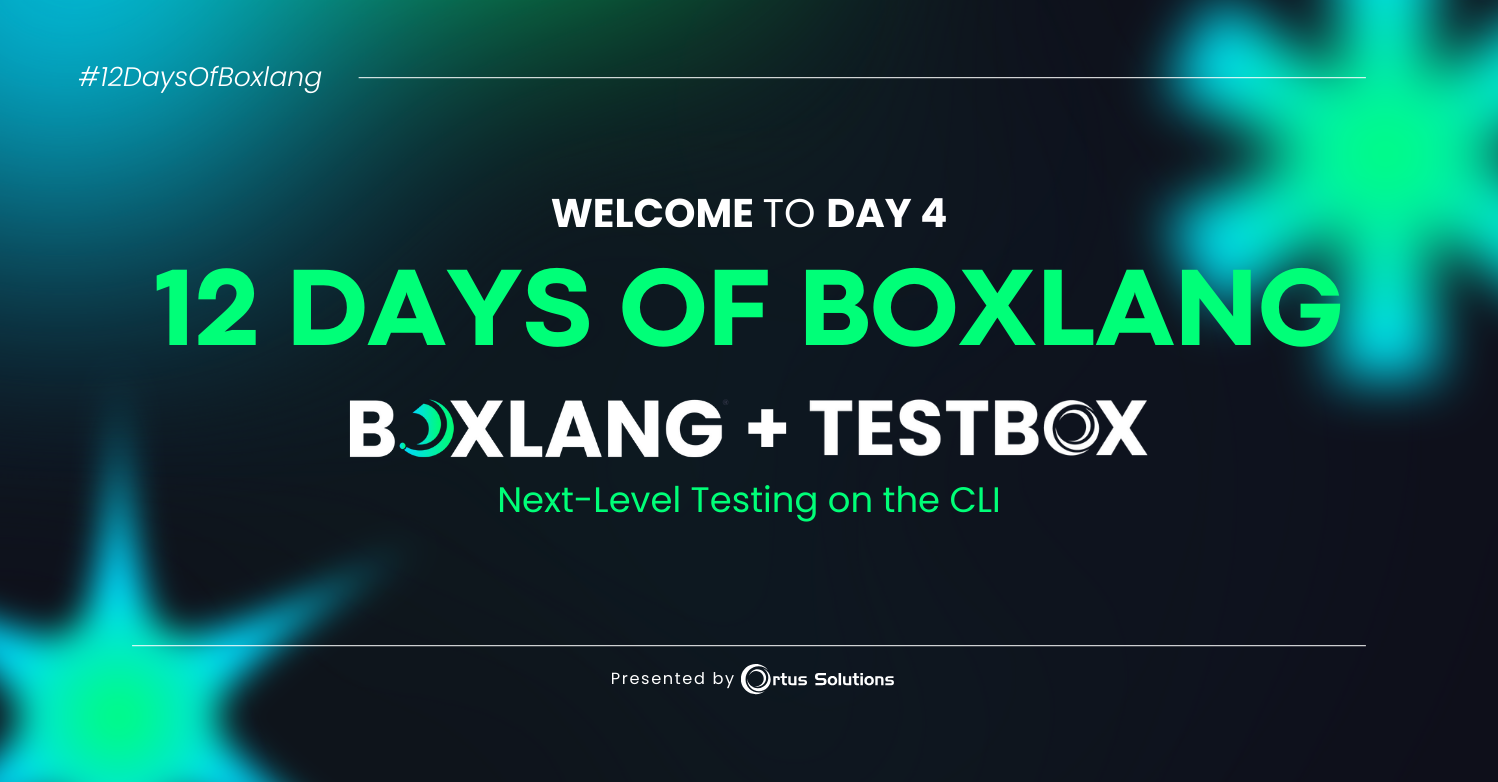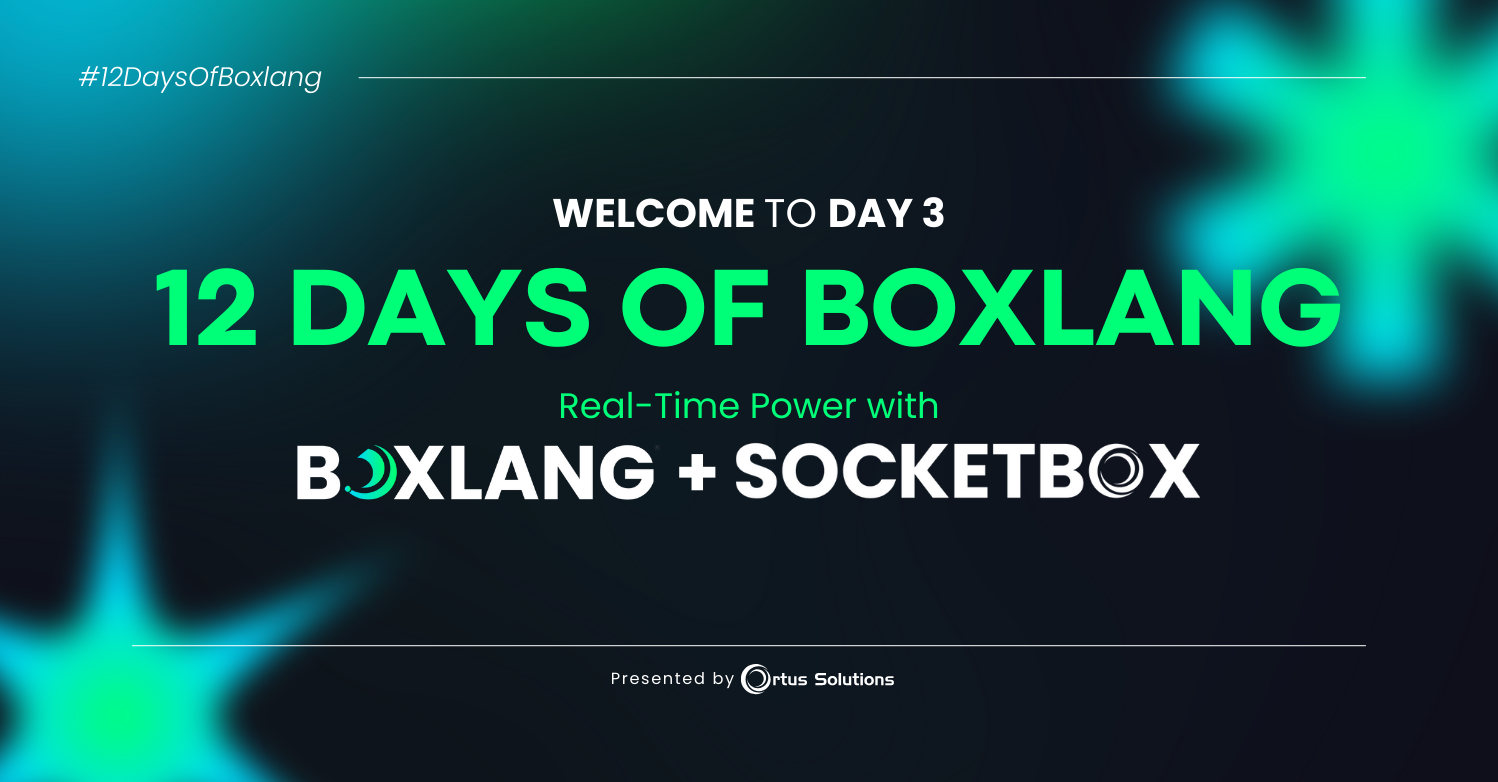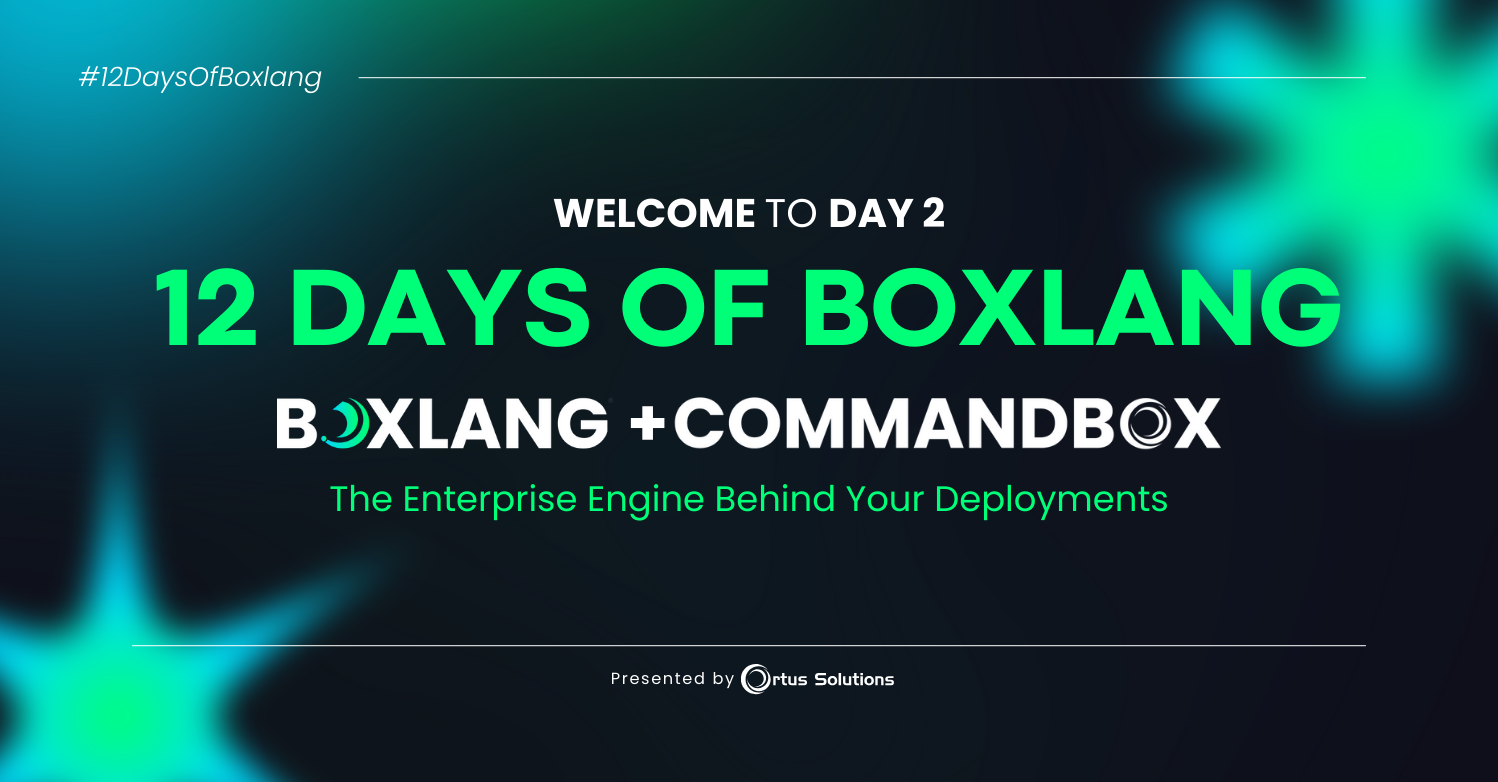Blog
Recent Entries

12 Days of BoxLang - Day 4: TestBox
Today we’re celebrating one of the most exciting new additions to the BoxLang ecosystem:
the TestBox BoxLang CLI Runner — a fast, native way to run your TestBox tests directly through the BoxLang Runtime. ⚡
No server required. No CommandBox needed. Just pure, ultra-fast BoxLang-powered testing from the command lineon Windows, Mac, and Linux.
If you’re building modern applications with BoxLang — web apps, CLIs, serverless functions, Android apps, or OS-level utilities — this new feature gives you a unified, flexible testing workflow you can run anywhere.

12 days of BoxLang - Day 3: SocketBox!
As BoxLang continues evolving into a modern, high-performance, JVM-based runtime, real-time communication becomes essential for the applications we all want to build: dashboards, collaboration tools, notifications, live feeds, multiplayer features, and more.
That’s where SocketBox steps in — the WebSocket upgrade listener built to work seamlessly with CommandBox and the BoxLang MiniServer. ⚡
Today, for Day 3, we’re highlighting how SocketBox supercharges BoxLang development by giving you fast, flexible, and framework-agnostic WebSocket capabilities.

12 Days of BoxLang - Day 2: CommandBox
BoxLang + CommandBox: The Enterprise Engine Behind Your Deployments
For Day 2 of our 12 Days of Christmas series, we’re diving into one of the most powerful parts of the BoxLang ecosystem: CommandBox the defacto enterprise servlet deployment platform for BoxLang.
If BoxLang is the language powering your applications, CommandBox is the engine room behind it all. ⚙️

Add Your Comment